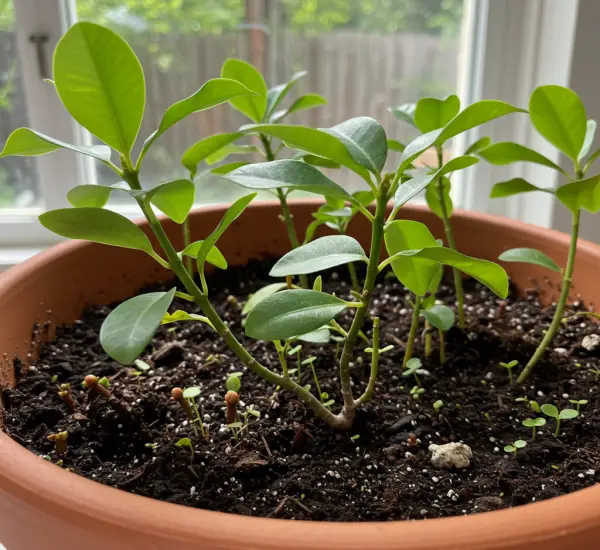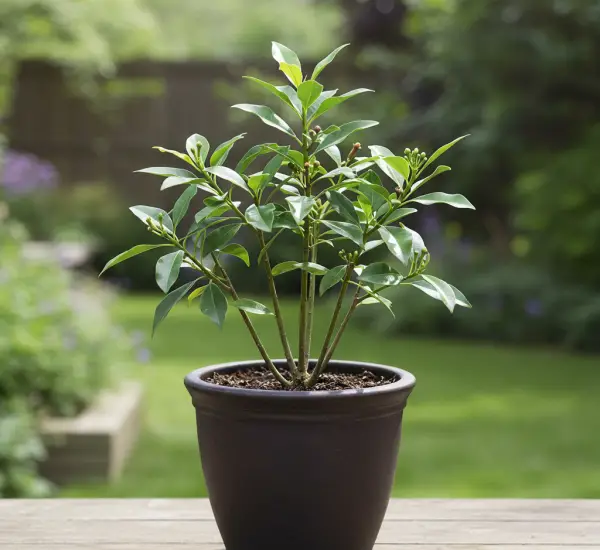Garlic and onions are two of the most essential crops in every kitchen garden. They’re easy to grow, rich in flavor, and packed with nutrients. What many gardeners don’t realize, however, is that these two alliums can be multiplied endlessly with a simple method — allowing you to harvest fresh bulbs year after year without needing to buy new seeds or sets. With the right technique, a small initial planting can yield an unlimited supply of garlic and onions for your home and table.
Understanding Garlic and Onion Growth
Both garlic and onions belong to the Allium family, and they share similar growing habits. Garlic grows from individual cloves, each of which can sprout and form a new bulb. Onions, on the other hand, grow from either seeds, sets (small bulbs), or green onion roots. The beauty of both plants is that they can regenerate from their parts — meaning that with a bit of care, you can replant what you harvest.
Each clove of garlic has the potential to grow into a new bulb containing multiple cloves. Similarly, onion roots or bulbs can continue multiplying when replanted under the right conditions. This regenerative ability is what allows you to multiply them endlessly.
The Garlic Multiplication Method
To begin, select a few healthy, large garlic bulbs. The larger the cloves, the stronger the resulting plants. Avoid using garlic that has been treated with chemicals to prevent sprouting, as these may not grow well.
1. Separate the cloves.
Gently break apart the bulb and choose the biggest, healthiest cloves. Leave their papery skin intact — this acts as natural protection against disease.
2. Prepare the soil.
Garlic loves loose, well-drained, nutrient-rich soil. Mix in compost or well-rotted manure before planting to enrich the soil and ensure healthy root development.
3. Plant the cloves.
Insert each clove into the soil with the pointed end facing upward, about 5 cm (2 inches) deep and 10–15 cm (4–6 inches) apart. Cover lightly with soil and water well.
4. Water and care.
Keep the soil slightly moist but not soggy. Garlic doesn’t like sitting in water, which can cause the bulbs to rot.
5. Harvest and replant.
After several months, when the lower leaves begin to yellow, your garlic bulbs are ready to harvest. Once harvested, let them dry in a shaded area for a few days.
Now comes the key step — set aside a few bulbs for replanting. Each harvested bulb can produce six to ten new cloves, and if you replant the largest ones, your garlic supply will keep multiplying season after season.
This simple cycle of replanting a portion of your harvest ensures that you’ll never run out of garlic again.
The Onion Regeneration Trick
Onions are equally generous when it comes to propagation. You can multiply them endlessly using small bulbs, roots, or even onion scraps from your kitchen.
1. Using onion bulbs or sets:
Save the smaller onions from your harvest to replant. These will grow into larger bulbs in the next cycle. Plant them about 2–3 cm (1 inch) deep and 10 cm (4 inches) apart in fertile, well-drained soil. Water regularly but avoid overwatering.
2. Using onion roots from kitchen scraps:
If you have an onion in your kitchen that’s started sprouting green shoots, don’t throw it away! Cut off the bottom section — the part with the roots — and leave about 2–3 cm (1 inch) of the bulb attached. Let it dry for a day, then plant it in moist soil with the root side down.
Within a few weeks, new green shoots will emerge, followed by small bulbs developing underground. This simple trick lets you turn one onion into several.
3. Multiplying with onion greens:
When you cut green onions or scallions, leave about 3–4 cm (1–2 inches) of the white base with the roots intact. Place it in a glass of water for a few days until new shoots appear, then transplant it into soil. It will continue growing — and you can harvest from the same plant repeatedly.
Essential Growing Tips for Endless Multiplication
-
Sunlight: Garlic and onions love full sun. Choose a sunny spot where they’ll receive at least six hours of light per day.
-
Soil: Well-drained soil is key. Heavy, waterlogged soil leads to rot. Add compost to improve texture and fertility.
-
Fertilizing: Use organic compost or natural fertilizers such as compost tea or banana peel water to enrich the soil.
-
Pest control: To protect your plants, consider companion planting. Growing carrots, chamomile, or lettuce nearby can help deter onion flies and aphids.
-
Rotation: Avoid planting garlic or onions in the same soil two years in a row to prevent diseases. Rotate with leafy greens or legumes to restore nutrients.
A Self-Sustaining Harvest
By applying these easy propagation methods, your garden can become self-sustaining, producing garlic and onions indefinitely. Each season, simply reserve part of your harvest to replant — nature does the rest.
Not only will you save money, but you’ll also enjoy fresher, more flavorful produce, free from chemicals and pesticides. Over time, your soil will improve, your bulbs will adapt to local conditions, and your yields will become even stronger.
With just a handful of cloves and bulbs, you can create an endless cycle of growth, ensuring that your kitchen never runs out of these two indispensable ingredients. It’s nature’s simplest secret — plant once, nurture wisely, and harvest forever.




